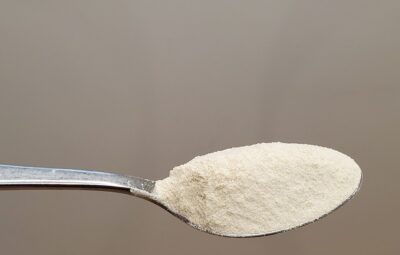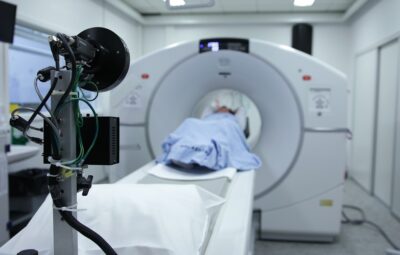A man or woman may experience a reduction in the amount of urine they produce for multiple possible reasons.
The most important reasons why someone might become dehydrated are vomiting, having a fever, having diarrhea due to sickness, and not consuming enough fluids.
You can certainly solve the last issue by drinking more liquids, but some of the other problems need more attention.
What Is Decreased Urine Output?
Decreased urine output is medically known as oliguria.
The average amount of urine that is produced in a day is typically under 13.5 ounces (400 ml). Small urine output could be caused by an abrupt kidney damage or kidney failure.
How to Measure Kidney Function
Physicians utilize the estimated glomerular filtration rate (GFR) to quantify kidney function.
The level of creatinine in a person’s blood is determined by examining the results of their blood test, as well as their age, body size, and gender.
The GFR rate typically drops with age.
A healthy adult should have a blood pressure level of at least 90. The level tends to decrease as you age.
Older adults typically experience poor kidney functioning when their levels are below 60.
A creatinine blood examination can be used as a general measure of kidney function to determine how effective they are in eliminating waste matter and fluids from the bloodstream.
Women should be concerned if their levels are above 1.2 and men if their levels are over 1.4, as this may be indicative of early-stage kidney disease.
As it progresses, creatinine blood levels tend to rise.
Causes of Decreased Urine Output
The normal rate of urine production is usually 1.5 to 2 milliliters per kilogram of body weight per hour, which is equivalent to 8 to 9 ounces per hour for someone who weighs 150 pounds.
Dehydration
If you are excreting less liquid than normal, and there is no obvious reason, it may be a sign of dehydration and can be resolved by drinking additional liquids.
Infection or Obstruction
Urine that is noticeably darker or contains blood could be an indication of a serious medical issue that requires medical treatment.
Urination may be reduced due to an infection or blockage in the bladder or urinary system.
Medications
Sometimes urination problems can be caused by certain medications.
Some medications that are known to reduce urine production include:
- Nonsteroidal anti-inflammatory drugs (NSAID′s)
- Blood pressure medications such as ACE inhibitors
- Various antibiotics
Kidney Injury
The primary function of the kidneys is to filter the bloodstream and eliminate undesirable elements.
A lack of urine that does not appear to result from dehydration could be an indication of a serious issue.
A disruption of one’s urine output could be the result of a previous disease, operation, or chronic issue of the prostate.
There is a type of filter in the kidneys called a glomerulus, and the speed at which the kidneys cleanse unwanted toxins from the body is referred to as the glomerular filtration rate or GFR.
Patients with acute kidney injury may have a drastically reduced glomerular filtration rate.
Despite a low glomerular filtration rate, urine output may vary from having little to typical amounts.
Low Blood Pressure
Some diseases can result in a momentary drop in blood pressure.
In most cases this does not cause major issues, however, if there is prolonged decreased blood circulation, it can reduce the amount of blood that goes through the kidneys, therefore reducing the amount of urine produced.
This condition, although infrequent, could be caused by low cardiac output, heavy dehydration, a decreased amount of blood in the body (hypovolemia), bleeding, cardiac dysfunction, an amplified systemic inflammatory reaction, or a blood infection.
Tubular Necrosis
Tubular necrosis is a condition that leads to a decrease in the circulation of blood to the kidneys.
Kidney damage can result from any situation that leads to an inadequate amount of oxygen and blood flow getting to the kidneys.
Tubules, which are tubular structures found in the kidneys, carry out the task of filtering out unwanted waste products.
Structure destruction due to prolonged impediment of blood circulation could result in necrosis and diminished renal perfusion, which in turn, would be detrimental to renal functioning.
Benign Prostate Hyperplasia (BPH)
Men suffering from BPH may find themselves unable to expel any urine due to an obstruction of their urinary system.
This usually takes place in the wee hours of the morning.
A medical emergency requiring a visit to the hospital emergency room is typically the situation.
The bladder not being emptied completely over a prolonged period of time is a typical result of benign prostatic hyperplasia.
Insufficient emptying of the bladder can create too much pressure on the kidneys, leading to kidney damage and complete kidney malfunction.
Benign Prostatic Hyperplasia: Evaluation and Medical Management
Two Mechanisms: Static, Dynamic
A histologic analysis reveals an increase in smooth muscle, epithelium, and stromal cells in the transition area around the initial portion of the urethra connected to the prostate for Benign Prostatic Hyperplasia.
The symptoms appear to be a result of two processes: one in which the enlarged prostate tissue puts pressure on the urethra, and another in which the adrenergic nervous system and the muscles in the prostate tighten up. There are two ways for the bladder outlet to become more resistant to the flow of urine. In order to keep the flow of urine going and to combat obstruction, the detrusor muscles increase in size as an adaptive response. Eventually, the bladder may not be able to hold as much urine as before and muscular activity will be more noticeable, resulting in an increase of symptoms such as a need to urinate more often and a sudden, strong urge to urinate. Obstruction of the urinary tract can cause poor bladder functioning which shows itself with difficulty in emptying, difficulty starting to urinate, pauses while urinating, a weak stream, and difficulty in completely passing urine.
History and Differential Diagnosis
The initial step of examination involves describing the patient’s signs and figuring out which are the most troublesome. A comprehensive medical history needs to be evaluated so as to rule out other potential causes of lower urinary tract disturbances and to evaluate the consequences of any treatment that may be administered for Benign Prostatic Hyperplasia (BPH).
- Obstructive urinary symptoms can arise from BPH or from other conditions, including urethral stricture disease and neurogenic voiding dysfunction.
- Irritative voiding symptoms such as urinary urgency and frequency can result from detrusor overactivity secondary to BPH, but can also be caused by neurologic disease, malignancy, initiation of diuretic therapy, high fluid intake, or consumption of bladder irritants such as caffeine, alcohol and spicy foods.
- Urinary frequency is sometimes a presenting symptom of undiagnosed or poorly controlled diabetes mellitus resulting from glucosuria and polyuria. Iatrogenic causes of polyuria include the new hypoglycemic agents, canagliflozin and dapagliflozin, which block renal glucose reabsorption, improving glycemic control by inducing urinary glucose loss.
- Nocturia has many possible nonurologic causes including heart failure (in which excess extravascular fluid shifts to the intravascular space when the patient lies down, resulting in polyuria), obstructive sleep apnea, and behavioral factors such as high evening fluid intake. In these cases, patients usually have nocturnal polyuria (greater than one-third of 24-hour urine output at night) rather than only nocturia (waking at night to void).
- Hematuria can develop in patients with BPH with bleeding from congested prostatic or bladder neck vessels; however, hematuria may indicate an underlying malignancy or urolithiasis, for which a urologic workup is indicated.
Physical Examination
A general examination should include the following:
- Body mass index. Obese patients are at risk of obstructive sleep apnea, which can cause nocturnal polyuria.
- Abnormal gait may suggest a neurologic condition such as Parkinson disease or function.
- Lower abdomen. A palpable bladder suggests urinary retention.
- External genitalia. Penile causes of urinary obstruction include urethral meatal stenosis or a palpable urethral mass.
- Digital rectal examination can reveal benign prostatic enlargement or nodules or firmness, which suggest malignancy and warrant urologic referral.
- Neurologic examination, including evaluation of anal sphincter tone and lower extremity sensorimotor function.
- Bilateral lower-extremity edema may be due to heart failure or venous insufficiency.
The International Prostate Symptom Score
Individuals with lower urinary tract problems should fill out the International Prostate Symptom Score (IPSS) assessment, which includes seven queries about urinary issues and one concerning their quality of life. In particular, this question presents to the patient, “In the past four weeks, how frequently have you…?
- Had a sensation of not emptying your bladder completely after you finish urinating?
- Had to urinate again less than 2 hours after you finished urinating?
- Found you stopped and started again several times when you urinated?
- Found it difficult to postpone urination?
- Had a weak urinary stream?
- Had to push or strain to begin urination?
- Over the past month, how many times did you most typically get up to urinate from the time you went to bed until the time you got up in the morning?
- If you were to spend the rest of your life with your urinary condition the way it is now, how would you feel about that?
Scores are categorized as mild, moderate and severe. This questionnaire can also be utilized to track the development of an illness and observe how it responds to medical treatment over a period.
Medical Management
Medicines utilized to treat Benign Prostatic Hyperplasia can comprise of alpha-adrenergic blockers, 5-alpha reductase regulators, anticholinergics, beta-3 agonists, and phosphodiesterase-5 inhibitors.
Alpha-Adrenergic Receptor Blockers
In studies of BPH, alpha-blockers were shown to reduce the symptom score by up to 45%, as well as increasing the peak urinary flow rate from the baseline measurement by as much as 30%. These agents act quickly (in a few days) and cause a considerable decrease in symptoms. No evidence exists that any one of them is more effective than the others in terms of performance.
Alpha-blocker monotherapy may not be an ideal choice for men who are at a greater danger of experiencing development in benign prostatic hyperplasia, as we will explain further. Even though it is effective at swiftly lessening the signs, there may be better alternatives.
Patients must be given information concerning the probable repercussions of this treatment, including giddiness, exhaustion, swelling of the extremities, low blood pressure when standing and problems with ejaculation.
It is essential to be aware of the dosage differences among alpha-blocker medications in order to get the most out of this type of therapy. Patients who are planning to have cataract surgery should wait to begin alpha-blocker therapy.
5-Alpha Reductase Inhibitors
There are two medications that act to reduce the activity of 5-alpha reductase: dutasteride and finasteride. The two agents lead to the death of prostate surrounding tissues, leading to a 20-25% average decrease in the size of the prostate.
It is thought that Finasteride and dutasteride can reduce the blocked part of BPH, with similar enhancements found in urine flow rate (a range of 1.6–2.2 mL/sec) and total symptom rating (between -2.7 to – 4.5 points) in individuals with a enlarged prostate. It was demonstrated by research conducted in the MTOPS study that those males with a prostate size of at least 30 grams or a PSA level of 1.5 ng/mL or above are the most probable individuals who are to obtain benefits from using 5-alpha reductase inhibitors. You will typically experience the best results in terms ofsymptoms after taking 5-alpha reductase inhibitor medication for 3 to 6 months.
Finasteride has been documented to not only boost urinary flow and ease lower urinary tract issues, but to also mitigate the risk of further advancement of prostate diseases in men who have prostates over thirty grams.
Patients should be enlightened about possible unwanted side effects before beginning 5-alpha reductase inhibitor treatment, including trouble achieving an erection (occurring in 5-8 percent of people), lowered sexual desire (5 percent), difficulty ejaculating (1-5 percent) and an enlarged breast size in men (1 percent).
Combination Therapy
Combination therapy that includes an alpha-blocker (doxazosin) and a 5-Alpha reductase inhibitor (finasteride) should be taken into consideration as an effective means to stop the development of an enlarged prostate and moderate to serious lower urinary tract symptoms in males.
Anticholinergic Agents
Anticholinergics were seen as off-limits for men with BPH in the past because of worries about blocking their bladder’s ability to empty. Nevertheless, usage of anticholinergics does not result in a high risk of urinary retention for males who have a postvoid residual quantity of lower than two hundred millilitres. It has been proven that adding anticholinergic drugs to alpha-blockers brings better relief of symptoms for males suffering from Benign Prostatic Hyperplasia (BPH), uncomfortable symptoms of the lower urinary tract, and an insufficient post-urination quantity.
Improving Urine Output
Several ways to improve urinary output for a man with BPH are as follows:
- Stay active. Lack of physical activity can exacerbate urine retention.
- Learn to do Kegel exercises.
- Double void. A technique where waiting a few minutes after voiding may help bladder muscles relax and emptying more urine.
- Meditate. Nervous tension can cause an increased need to void with little results.
Individuals with BPH can usually find relief from urinary struggles through the use of natural or pharmaceutical drugs.
Consult a natural health professional or a holistic medical doctor for advice on potential remedies.
Chronic BPH can lead to holding back of urination which can cause rare urination episodes.
The bladder tends to remain substantially filled or almost filled the majority of the time, resulting in reverse force being exerted on the kidneys.
Duration of urinary blockage can lead to renal disease, damage to the kidneys, and eventually kidney failure.
Treatment and Prevention
The treatment of some kinds of kidney diseases may be possible, depending on the origin and intensity of the problem.
Once the illness has become too advanced and long-term, there is generally no remedy.
Typically, managing the indicators, limiting any issues which may arise, and decelerating the spread of the condition, are efforts applied to treat it.
When the kidneys are severely damaged, there are not many treatment options.
One of the most common explanations for reduced urine output is not having enough fluids in the body. It is also the most easily correctable issue.
Simply drinking more fluids will help solve the problem.
In extreme situations, infusion of fluids through the veins, known as intravenous introduction (IV), may be required.
A tube is used to inject liquids into a vein in the hand or arm.
Frequently, to stop the body from losing moisture, healthcare providers will resort to diuretic drugs or loop diuretics to enhance the volume of urine produced. Severe dehydration can lead to shock, sepsis, or death.
Shock is an urgent medical issue and must be tended to straight away.
Dialysis of the kidney is a possible solution, but it is usually only used for long-term situations.
When your kidneys are unable to perform their function, dialysis is a procedure that eliminates excess fluids and waste products from your bloodstream.
It is a procedure in which a device strains out unwanted material and excess liquids from the blood in order to accomplish what the kidneys usually would.
The ultimate recourse may be to perform a kidney transplant.
This means that a procedure is performed where a healthy kidney from either a deceased person or a living relative of the patient is put in place of a malfunctioning organ.







